-
 Bitcoin
Bitcoin $114200
0.00% -
 Ethereum
Ethereum $3637
0.56% -
 XRP
XRP $2.950
-2.01% -
 Tether USDt
Tether USDt $0.9999
0.02% -
 BNB
BNB $761.0
0.55% -
 Solana
Solana $164.1
-1.38% -
 USDC
USDC $0.9999
0.02% -
 TRON
TRON $0.3332
0.36% -
 Dogecoin
Dogecoin $0.2012
-0.52% -
 Cardano
Cardano $0.7261
-1.41% -
 Hyperliquid
Hyperliquid $37.62
-2.13% -
 Stellar
Stellar $0.3930
-2.65% -
 Sui
Sui $3.441
-0.16% -
 Bitcoin Cash
Bitcoin Cash $563.8
0.70% -
 Chainlink
Chainlink $16.50
0.09% -
 Hedera
Hedera $0.2424
-0.14% -
 Ethena USDe
Ethena USDe $1.001
0.01% -
 Avalanche
Avalanche $22.20
0.00% -
 Litecoin
Litecoin $118.0
-2.48% -
 UNUS SED LEO
UNUS SED LEO $8.991
0.12% -
 Toncoin
Toncoin $3.195
-3.87% -
 Shiba Inu
Shiba Inu $0.00001217
0.12% -
 Uniswap
Uniswap $9.674
-0.21% -
 Polkadot
Polkadot $3.633
1.00% -
 Monero
Monero $295.3
-0.82% -
 Dai
Dai $0.9999
0.00% -
 Bitget Token
Bitget Token $4.321
-0.41% -
 Cronos
Cronos $0.1392
0.73% -
 Pepe
Pepe $0.00001027
-0.89% -
 Aave
Aave $258.5
0.32%
USDT vs USD: Comparison between virtual currency and traditional currency
USD, backed by the US government, is the global reserve currency, while USDT, a stablecoin pegged to the USD, operates within the crypto market. Key differences include backing, regulation, accessibility, and transaction speeds, highlighting the distinct roles each plays in finance.
Mar 18, 2025 at 06:30 pm
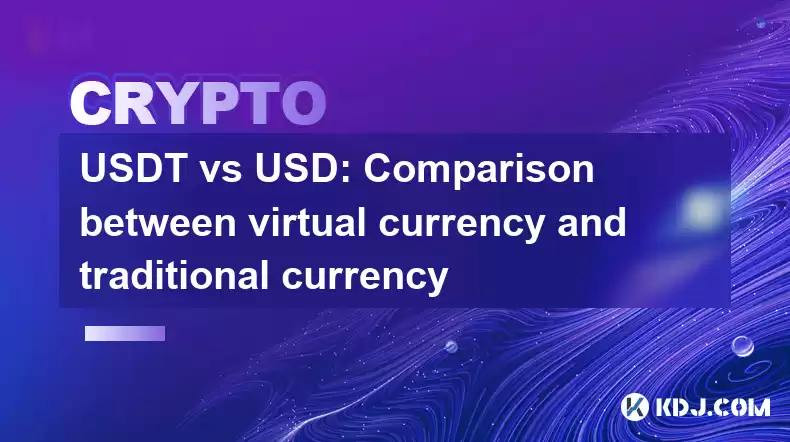
Key Points:
- USDT, a stablecoin pegged to the US dollar, operates within the cryptocurrency ecosystem, offering price stability unlike volatile cryptocurrencies.
- USD, the US dollar, is the world's reserve currency, backed by the US government and used globally for transactions and as a store of value.
- Key differences lie in their backing, regulatory oversight, accessibility, transaction speeds, and fees.
- Both serve different purposes; USD for traditional finance and USDT for bridging the crypto and fiat worlds.
- Understanding these differences is crucial for navigating the cryptocurrency market effectively.
USDT vs USD: A Detailed Comparison
The cryptocurrency market is characterized by significant volatility. While Bitcoin and Ethereum can experience dramatic price swings, stablecoins aim to provide stability. Tether (USDT) is one of the most prominent stablecoins, claiming to maintain a 1:1 peg with the US dollar (USD). However, crucial differences exist between these two, extending beyond their inherent nature.
Backing and Trust:
The USD is backed by the full faith and credit of the United States government. This means its value is underpinned by the economic strength and stability of the nation. USDT, conversely, is purportedly backed by reserves held by Tether, a company, which claims to hold equivalent USD reserves to the number of USDT in circulation. However, the transparency and composition of these reserves have been subject to ongoing scrutiny and debate within the crypto community. This lack of complete transparency contributes to concerns about the stability and reliability of USDT.
Regulation and Oversight:
The USD is subject to rigorous regulation by the US government, including the Federal Reserve. This regulatory framework provides a level of protection for users and ensures a degree of stability and accountability. USDT, operating primarily within the decentralized world of cryptocurrencies, faces less stringent regulatory oversight, leading to uncertainty regarding its long-term stability and compliance with evolving financial regulations. The lack of clear regulatory frameworks for stablecoins globally presents a significant risk factor.
Accessibility and Transaction Methods:
Accessing USD is relatively straightforward. It can be accessed through traditional banking systems, ATMs, and various financial institutions worldwide. Accessing USDT requires interaction with cryptocurrency exchanges. This often involves creating accounts, verifying identities, and navigating the complexities of digital wallets and cryptocurrency transactions. The accessibility of USD is vastly superior for the average individual.
Transaction Speeds and Fees:
Transactions using USD are typically processed quickly through established banking systems. Fees vary depending on the method used, but they are generally predictable and often lower than those associated with cryptocurrency transactions. USDT transactions, while faster than some cryptocurrencies, are still subject to network congestion and fluctuating transaction fees, especially during periods of high trading volume on the relevant blockchain.
Use Cases and Purpose:
The USD serves as the primary medium of exchange in numerous countries and is widely accepted for a vast array of transactions, from everyday purchases to international trade. USDT's primary use case lies within the cryptocurrency ecosystem. It facilitates the exchange of other cryptocurrencies and provides a relatively stable asset for traders looking to reduce their exposure to volatility. It acts as a bridge between the fiat and crypto worlds.
Common Questions:
Q: Is USDT a safer investment than USD?
A: No, the safety of either USD or USDT depends on various factors. The USD benefits from the backing of a major government, while USDT's backing and transparency are subject to ongoing scrutiny. Neither is inherently "safer."
Q: Can I use USDT in everyday transactions like I use USD?
A: No, USDT is primarily used within the cryptocurrency ecosystem. Its acceptance for everyday purchases is extremely limited compared to the widespread acceptance of the USD.
Q: What are the risks associated with holding USDT?
A: The main risks include the potential for de-pegging from the USD (meaning its value drops below $1), regulatory uncertainty, and the inherent risks associated with any cryptocurrency investment. The backing and auditing of Tether’s reserves also pose significant risks.
Q: How do I acquire USDT?
A: USDT is primarily acquired through cryptocurrency exchanges. You'll need to create an account, verify your identity, and then deposit USD or another cryptocurrency to purchase USDT.
Q: Are there any alternatives to USDT?
A: Yes, several other stablecoins exist, each with its own backing mechanism, regulatory status, and associated risks. These include USDC, BUSD, and DAI, among others. Each has its own strengths and weaknesses to consider.
Q: What are the implications of regulatory changes on USDT?
A: Regulatory changes could significantly impact USDT. Increased scrutiny or stricter regulations could affect its operations, stability, and overall viability within the cryptocurrency market. This uncertainty is a major risk factor.
Disclaimer:info@kdj.com
The information provided is not trading advice. kdj.com does not assume any responsibility for any investments made based on the information provided in this article. Cryptocurrencies are highly volatile and it is highly recommended that you invest with caution after thorough research!
If you believe that the content used on this website infringes your copyright, please contact us immediately (info@kdj.com) and we will delete it promptly.
- Ethereum, Transaction Volumes, and SEC Staking: Navigating the Regulatory Landscape
- 2025-08-06 22:30:13
- Crypto, Tokens, and Metrics: Navigating the New Frontier
- 2025-08-06 23:09:22
- Crypto Market Buzz: PROVE Surges as Coinbase, Binance List Token
- 2025-08-06 22:30:13
- BlockDAG, Crypto, and Binance Coin: The Hottest Trends You Can't Ignore
- 2025-08-06 23:50:13
- BlockSack Who? Base Network and Layer 2s Shake Up the Crypto Scene
- 2025-08-06 23:10:13
- DOGE, SHIB, and Remittix ROI: Shifting Sands in the Crypto Landscape
- 2025-08-06 23:50:13
Related knowledge

How to choose a reliable USDT exchange service provider? How to identify?
Jun 12,2025 at 03:15pm
Understanding the Role of USDT in Cryptocurrency TradingUSDT (Tether) is one of the most widely used stablecoins in the cryptocurrency market. It is d...
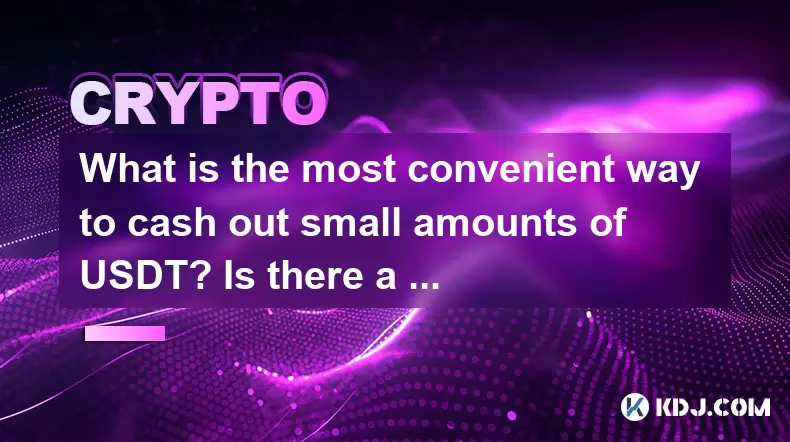
What is the most convenient way to cash out small amounts of USDT? Is there a shortcut?
Jun 11,2025 at 11:00pm
Understanding the Need to Cash Out Small USDT AmountsCashing out small amounts of USDT can be a challenge for many crypto users. Traditional methods o...
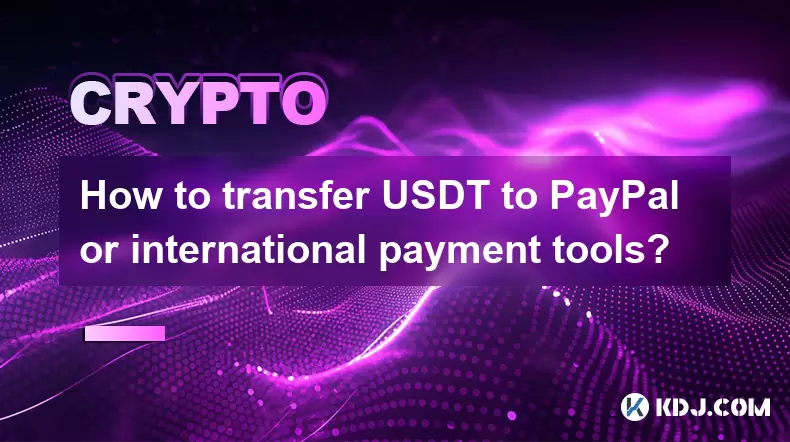
How to transfer USDT to PayPal or international payment tools?
Jun 15,2025 at 05:28am
Understanding the Basics of USDT and PayPal IntegrationUSDT (Tether) is a stablecoin pegged to the US dollar, offering blockchain-based value transfer...
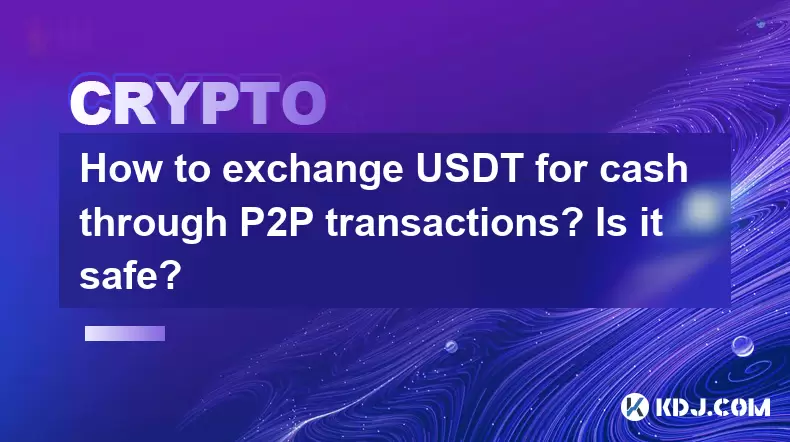
How to exchange USDT for cash through P2P transactions? Is it safe?
Jun 18,2025 at 07:56am
Understanding USDT and P2P TransactionsTether (USDT) is a stablecoin pegged to the value of the US dollar, making it a popular choice for users who wa...
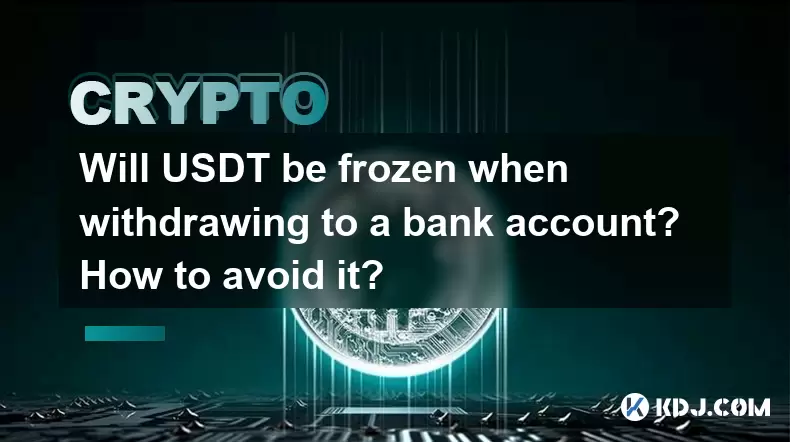
Will USDT be frozen when withdrawing to a bank account? How to avoid it?
Jun 15,2025 at 10:03am
Understanding USDT Withdrawals and Bank Account Freezing RisksWhen users decide to withdraw USDT (Tether) to a bank account, one of the most common co...
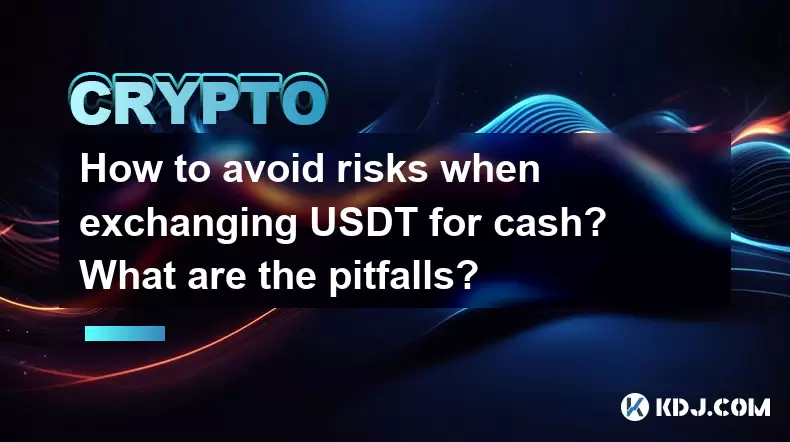
How to avoid risks when exchanging USDT for cash? What are the pitfalls?
Jun 11,2025 at 08:14pm
Understanding the Risks of Exchanging USDT for CashWhen exchanging USDT (Tether) for cash, users must be aware of the potential risks involved. As a s...

How to choose a reliable USDT exchange service provider? How to identify?
Jun 12,2025 at 03:15pm
Understanding the Role of USDT in Cryptocurrency TradingUSDT (Tether) is one of the most widely used stablecoins in the cryptocurrency market. It is d...

What is the most convenient way to cash out small amounts of USDT? Is there a shortcut?
Jun 11,2025 at 11:00pm
Understanding the Need to Cash Out Small USDT AmountsCashing out small amounts of USDT can be a challenge for many crypto users. Traditional methods o...

How to transfer USDT to PayPal or international payment tools?
Jun 15,2025 at 05:28am
Understanding the Basics of USDT and PayPal IntegrationUSDT (Tether) is a stablecoin pegged to the US dollar, offering blockchain-based value transfer...

How to exchange USDT for cash through P2P transactions? Is it safe?
Jun 18,2025 at 07:56am
Understanding USDT and P2P TransactionsTether (USDT) is a stablecoin pegged to the value of the US dollar, making it a popular choice for users who wa...

Will USDT be frozen when withdrawing to a bank account? How to avoid it?
Jun 15,2025 at 10:03am
Understanding USDT Withdrawals and Bank Account Freezing RisksWhen users decide to withdraw USDT (Tether) to a bank account, one of the most common co...

How to avoid risks when exchanging USDT for cash? What are the pitfalls?
Jun 11,2025 at 08:14pm
Understanding the Risks of Exchanging USDT for CashWhen exchanging USDT (Tether) for cash, users must be aware of the potential risks involved. As a s...
See all articles

























































































